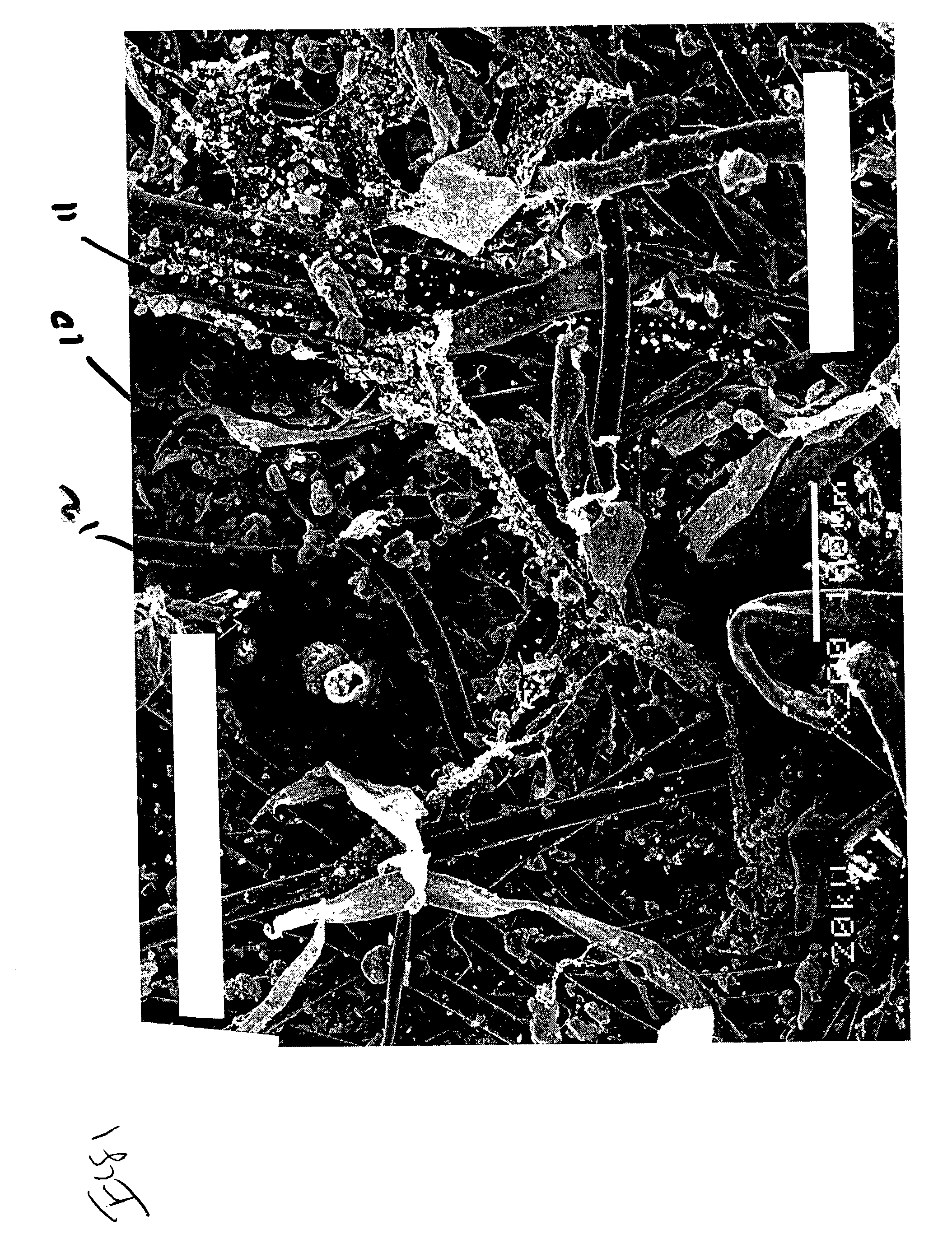Wipe material with nanofiber layer
- Summary
- Abstract
- Description
- Claims
- Application Information
AI Technical Summary
Benefits of technology
Problems solved by technology
Method used
Image
Examples
example 1
[0038] Polyamide fibers were electrospun onto the polypropylene-rich side of a blended fiber wipes material (blend of polypropylene and cellulose). The fiber size was 0.25 micron having a basis weight of the nanofiber application was approximately 0.21 g-m.sup.-2. The resulting material was then used to wipe the dash panel of a 1995 Ford Contour (nanofiber side in contact with the windshield), by swiping the material across the dash panel, back and forth, 3 times in an approximate 14" path. The SEM's and analysis associated with this test are shown in FIGS. 1-4.
example 2
[0039] Polyamide fibers were electrospun onto the polypropylene-rich side of a blended fiber wipes material (blend of polypropylene and cellulose). The basis weight of the nanofiber application was approximately 0.21 g-m.sup.-2, with a fiber size of approximately 0.25 microns. The resulting material was then used to wipe the interior windshield of a 1995 Ford Contour (nanofiber side in contact with the windshield), by wiping in a circular motion (approximate 8" diameter circle) 3 times, followed by wiping back and forth over the same area of the windshield 3 times, in a 10" path. The SEM's and analysis associated with this test are FIGS. 5-11.
example 3
[0040] Polyamide fibers were electrospun onto the cellulose-rich side of a blended fiber wipes material (blend of polypropylene and cellulose). The basis weight of the nanofiber application was approximately 0.21 g-m.sup.-2, with a fiber size of approximately 0.25 microns. The resulting material was then used to wipe the dash panel of a 1995 Ford Contour (nanofiber side in contact with the windshield), by swiping the material across the dash panel, back and forth, 3 times in an approximate 14" path. The scanning electro micrographs and analysis associated with this test are shown in FIGS. 12-17.
Automotive Dash Testing FIGS. 1-4
[0041] Nanofibers were applied to the polypropylene side of the two layer cellulosic / polypropylene material. The wipe was tested by its use in an automobile and was wiped on a vehicle dash.
[0042] In FIG. 1, at .times.200 magnification, we see dirt, particulate 10 sized as 50-70 .mu.m, with many much smaller particulate in the nanofiber web 11. Fabric substrate...
PUM
| Property | Measurement | Unit |
|---|---|---|
| Length | aaaaa | aaaaa |
| Length | aaaaa | aaaaa |
| Mass | aaaaa | aaaaa |
Abstract
Description
Claims
Application Information
 Login to View More
Login to View More - R&D
- Intellectual Property
- Life Sciences
- Materials
- Tech Scout
- Unparalleled Data Quality
- Higher Quality Content
- 60% Fewer Hallucinations
Browse by: Latest US Patents, China's latest patents, Technical Efficacy Thesaurus, Application Domain, Technology Topic, Popular Technical Reports.
© 2025 PatSnap. All rights reserved.Legal|Privacy policy|Modern Slavery Act Transparency Statement|Sitemap|About US| Contact US: help@patsnap.com



